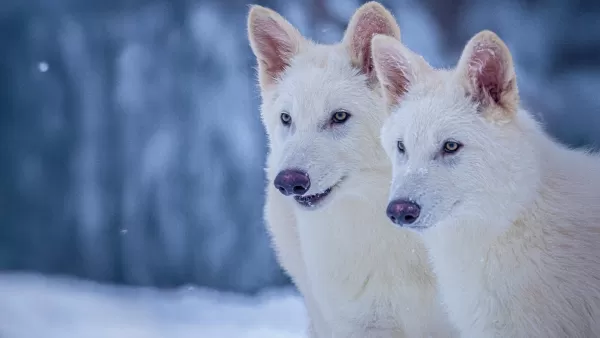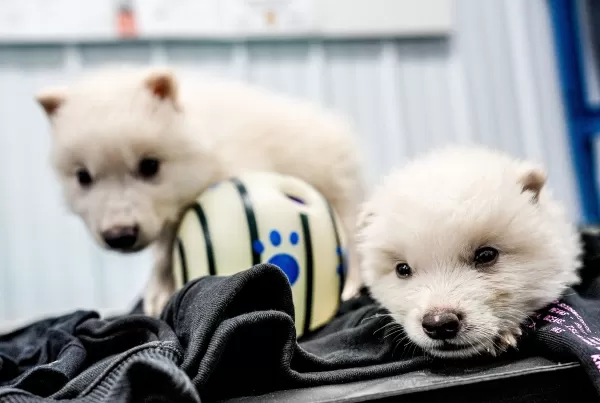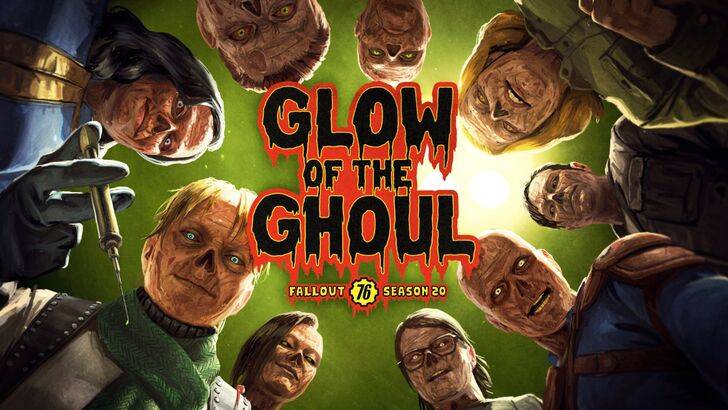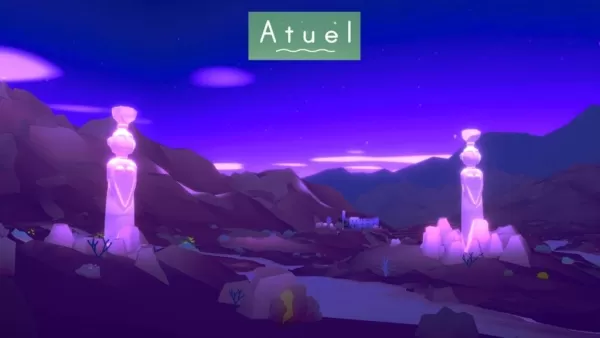by Stella May 06,2025
Bringing a super-sized canine back from extinction after 12,500 years sounds like a plot straight out of a blockbuster movie, complete with dramatic special effects. Yet, some have turned this cinematic concept into reality, and now the world boasts three living dire wolves, housed in a secret location within the US.
 Romulus and Remus at three months old
Romulus and Remus at three months old
The masterminds behind this revival are the biotech company Colossal Biosciences. Using DNA from the common gray wolf, advanced gene-editing techniques, and domestic dog surrogates, they successfully brought to life Romulus, Remus, and their younger sister, Khaleesi. These dire wolves are every bit as impressive as one might imagine—huge, white, and undeniably majestic.
“I could not be more proud of the team. This massive milestone is the first of many coming examples demonstrating that our end-to-end de-extinction technology stack works,” stated Ben Lamm, CEO of Colossal.
“Our team took DNA from a 13,000 year old tooth and a 72,000 year old skull and made healthy dire wolf puppies. It was once said, ‘any sufficiently advanced technology is indistinguishable from magic.’ Today, our team gets to unveil some of the magic they are working on and its broader impact on conservation.”
 Romulus and Remus at one month old
Romulus and Remus at one month old
Colossal Biosciences has previously captured headlines with their creation of the Colossal Woolly Mouse, a creature engineered to mimic the mammoth's phenotype using computational analysis of numerous mammoth genomes. However, the company faces criticism, with some arguing that the dire wolves are essentially normal wolves in elaborate costumes, lacking the true genetic makeup of their extinct ancestors.
The company's ambitions extend beyond creating viral sensations. Colossal Biosciences aims to leverage their discoveries to enhance the conservation efforts for contemporary species, ensuring their survival for future generations.
“The de-extinction of the dire wolf and an end-to-end system for de-extinction is transformative and heralds an entirely new era of human stewardship of life,” remarked Dr. Christopher Mason, a scientific advisor and board member of Colossal.
“The same technologies that created the dire wolf can directly help save a variety of other endangered animals as well. This is an extraordinary technological leap in genetic engineering efforts for both science and for conservation as well as preservation of life, and a wonderful example of the power of biotechnology to protect species, both extant and extinct.”
For these dire wolves, Colossal Biosciences has collaborated with the American Humane Society and the USDA to ensure their well-being at a spacious 2,000+ acre preserve. Like any celebrated figures, these animals are attended by a dedicated team of staff to cater to their needs.
Mobile Legends: January 2025 Redeem Codes Released
Pokemon TCG Pocket: Paralyzed, Explained (& All Cards with ‘Paralyze’ Ability)
Android Action-Defense
Brutal Hack And Slash Platformer Blasphemous Is Coming To Mobile, Pre-Registration Now Live
Pokémon TCG Pocket Is Dropping a Trade Feature and Space-Time Smackdown Expansion Soon
Mythical Island Debuts in Pokemon TCG, Time Revealed
GWENT: Top 5 Decks for 2025 - Strategies Revealed
Marvel Rivals Showcases New Midtown Map

Lucky Lady's Charm Deluxe Slot
Download
Vô Cực Đại Chiến
Download
Lunch with Ronan mod
Download
Diamond Deluxe Casino - Free Slot Machines
Download
Shopping Mall 3D Mod
Download
Priya’s Awakening
Download
Flight Pilot: 3D Simulator
Download
Flight Pilot: 3D Simulator
Download
L.A. Story - Life Simulator
Download
Pikmin Bloom Earth Day Walk Party Begins
Dec 24,2025
Sony Unveils Official PlayStation Wireless Speakers
Dec 24,2025

Cyberpunk 2077 to Fill 64GB, a Quarter of Switch 2 Storage
Dec 24,2025

Fallout 76 Unveils New Ghoul-Themed Update
Dec 23,2025

Climate Game Atuel Launches on Android (Note: "Surrealist Documentary" was removed to meet 50-character limit.)
Dec 23,2025